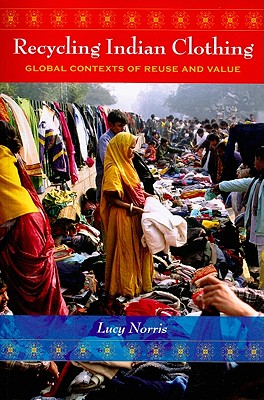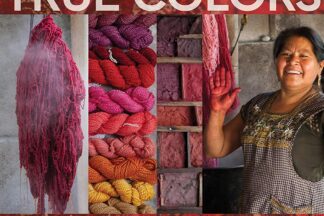Laces have been a firm part of haute-couture since the medieval, and the fabric still is, and always has been, a luxury product. The StGall exhibition in Switzerland pays tribute to 800 years of lace work featuring the best of European textile artisanry and technology.
The reaping (black market) trade in reptile skins for the luxury fashion and accessories market is an openly talked about, albeit ugly, reality of the present.
The recently published UNCTAD BioTrade report and toolkit provides useful and pragmatic info for designers.
Starting in 1866, a shoe factor by the name of William Green came regularly from Northamptonshire up to the City of London to get orders and then take them back to Rushden where, in 1874, he opened his first factory as William Green & Son, founding the company we know today as Grenson.
The story of London Cloth is a rather engaging one. It all boils down to a rather single minded fascination for looms, mechanical ones specifically. 2 years on, the hobby has become a proper weaving shed with both mechanical and power looms, and clients such as Ben Sherman.
Report by Jacqueline Shaw from Africa Fashion Guide, on a recent visit to The Gambia and the textile history and techniques she encountered during her stay.
For retail, Brazil is the ‘next hot’ place to go to.
For a variety of reasons: For one, the country’s economy has been for a long time up and raising. Brazil is one of the 4 BRIC countries – the 4 most dominant raising economies, and ranks forth among them. Its retail sector is expected to boom tremendously over the next few years owing largely to the two major global sport events – the 2014 FIFA World Cup and Rio 2016 Summer Olympics that will take place in the country.
Cotton as an attractive alternative in tsunami regions. Leading textile manufacturers promoting the cultivation of organic cotton. New technologies and methods for natural dyeing processes and recycling. And five categories of Green Fashion in Japan.
Discarded at one time, and hidden away in a drawer of the family home or even flogged off in a car boot sale, 'Little Glass Clementine' turns the most improbable centre piece of unique necklaces, each made 'to measure' for the personality and character of its new owner.
PASS THE BATON is a new type of recycle shop with two locations, in the center of Tokyo. It cherishes the emotional bound that both, previous and new owner have with the item, fostered by a carefully curated setting.
Algha Works are Britain’s last metal spectacle frame manufacturer, operating from Fish Island - close to the 2012 Olympics' site - for the past century. A portrait.
This book emerges itself into how clothing is bought, worn, discarded and recycled within India. In other words, it tracks down how Indian citizens (primarily women) manage their wardrobes, and the strategies and criteria of how they do it.
Natural Dyes in large scale industrial processes sounds like a complete 'No Go'. Tintoreria Clerici - one of the oldest and biggest in the business - is going back to their roots, and proving us all wrong.
March 22, 2012 : Araisara has completed her last runway show at Japan Fashion Week, and is preparing her collection's launch in Paris in October 2012. But while fashion shows are important, it is the people that remain the one single most important source of inspiration for her brand.
Daring to ask and daring to understand: the key ingredients that turn a passive customer in an active (activist) participant in our market economy. This book portrays 26 natural dye artisans, in beautiful pictures, honouring their skill and wisdom.
The first question time discussion in the House of Lords on the topic of sustainable fashion took place on March 3rd, 2011. On March 19th 2013, nearly 2 years later to the day, the 2nd edition took place, again initiated by Baroness Lola Young from Hornsey. The summary
With Sao Paulo Fashion Week just closed I am here to write (again) about Brazilian fashion.
This time it is about an interesting project I got to know of personally, Projeto Contem, a private and independent initiative.
Projeto Contem is both a brand and a network of entrepreneurs working in textile and fashion as well as in food, beauty, design, arts, music and cinema.
Looking at the sales figures of luxury brands a single conclusion can be drawn: The luxury sector is doing well.
The structure of its customers, and the brands' efforts to maintain expert craftsmanship suggests that the luxury sector is where ethical brands really can start changing the world.
Khadi is an Indian fabric par excellence. Hand-made from start to finish it has for centuries been the livelihood of rural communities. But the industry is in decline. Interview with Shailini Seth-Amin, CEO of MoralFibres, a company set to re-invent Khadi.
Bryan Whitehead is one of the few remaining textile craftsmen in Japan who not only rears his own silk, but masters the whole textile process. Just as he as learned from seasoned crafts people, he now hands his knowledge on to his students. A plea to best of craftsmen and women cherish their expertise by teaching.
The current fashion and textile landscape is fairly limited in terms of what types of materials are being used. Innovation is key, and products such as Tencel, Sorona and Ingeo proof that industry is investing heavily in R&D. Spider Silk may be one of the few natural fibres of the future yet to see it hayday.



